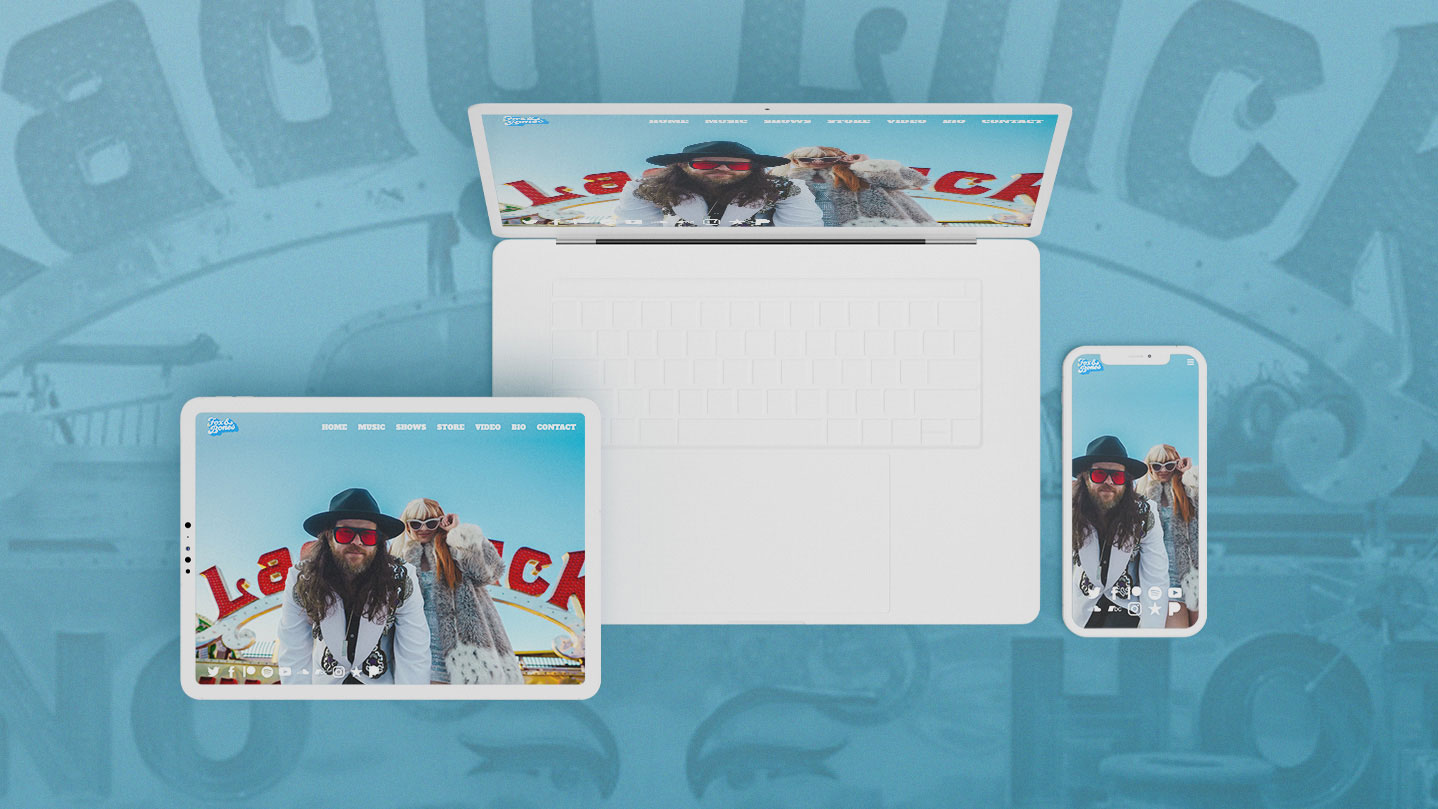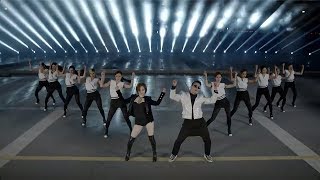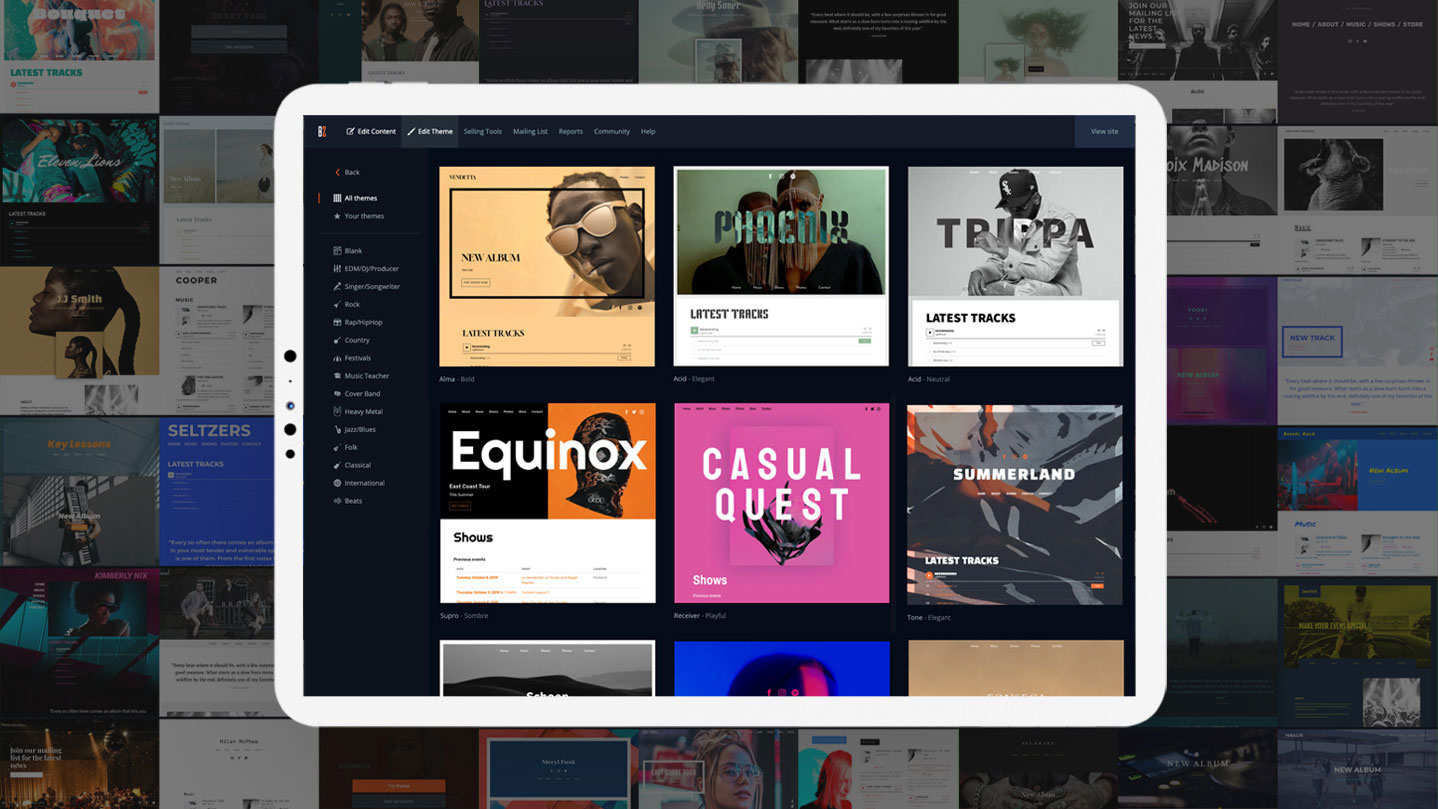These days, there are so many different ways to market your music online that it’s tough to even know where to start. Which services are worth your time, energy, and money? Should you be active on social and streaming platforms, and if so, which ones? Do email lists still matter?
Online music marketing revolves around engaging with your fans. To get started with music marketing, your main goal should be to find these fans, and make them aware of you. The next step is to solidify this relationship to create superfans who will support you throughout your career.
Before we dive into the specifics of how to market your music independently, let’s quickly touch on the three pillars of fan engagement. These should be at the core of your music marketing strategy, so keep them in mind as you create your plan:
Consistency. In order to rise above the noise of the internet, you have to be consistent in your music marketing, in terms of both quantity and quality.
Authenticity. Communication with your fans must come from you, the artist, in your voice. You want them to feel like they’re along for the ride on the journey of your music career.
Sustainability. There’s no shortcut or quick fix for building up a solid fanbase – you have to show up and do the work every day to sustain fan engagement.
Use these basics of fan engagement with online music marketing tools to drive awareness of and engagement with your music in order to produce effective results.
With these concepts in mind, let’s look at the best ways to market your music online:
1. Use your own website
A professional music website should play a big part in your music marketing strategy. In terms of building a fanbase, your website is the place where you’ll steer listeners to convert their curiosity into sustained interest in order to keep the relationship going over the long term.
Drive listeners back from your discovery platforms such as TikTok or Instagram to your website with the goal of engaging their interest and capturing their email addresses. Your website should contain consistent branding and content, but go more in-depth than social media platforms, to introduce fans to who you are. You can also sell music and merch commission-free, and build your community.
Other marketing strategies you can use with your music website include:
- Landing pages. Send traffic to focussed pages and then evaluate your efforts to see which strategies are engaging your fans the most.
- Smart Links. Create a mobile-ready page that you can use as a “link in bio” to direct fans to different pages.
- An artist EPK. Add a page that contains all of your professional marketing assets to make it easy for a reviewer to grab your song description, your bio, or listen to a new track.
- SEO (search engine optimization). A professional search results page and knowledge panel both feed from your songs and events online, helping to further your reach.
Also see:
How to make a music website
How to use a music landing page on your website
2. Create authentic content
Having consistent, quality content to share on your website and social media is integral to marketing your music in a sustainable way. Be sure to include several media formats in your content — videos and photos are both easy to create, and their compelling visuals produce a more interactive experience than simply reading text.
Here are a few ideas you can consider writing about, to get you started:
- Preview an upcoming show
- Review a recent show
- Tour stories
- Rehearsal updates
- Studio stories
- Songwriting snippets
- New gear
- Collaborations with other artists
- Stories from your personal life (if you’re comfortable with that)
- Your pets
- Your hobbies and passions outside of music
The goal with content is to help you build your fanbase to the point that you’ll have a solid core in place, and that fanbase will be excited when you release new music.
You don’t have to release new singles every week or even every month in the name of creating content. Find a steady pace that works for you, and incorporate content that isn’t a music release — whether it’s talking about the writing process as you gear up for an album, or adding reviews of gear that you’re loving.
The key here is consistency: regular updates show that your career is active and, over time, it helps create a stronger connection to your fans. Add your content in multiple places: your music website first, on a ‘news’ page, or in a blog, on social media, and in your newsletters. Then see what works best for you — what you enjoy creating, and what your fans gravitate toward. Then repeat.
Also see:
7 top marketing strategies for musicians
6 tips for creating content on a budget as a musician
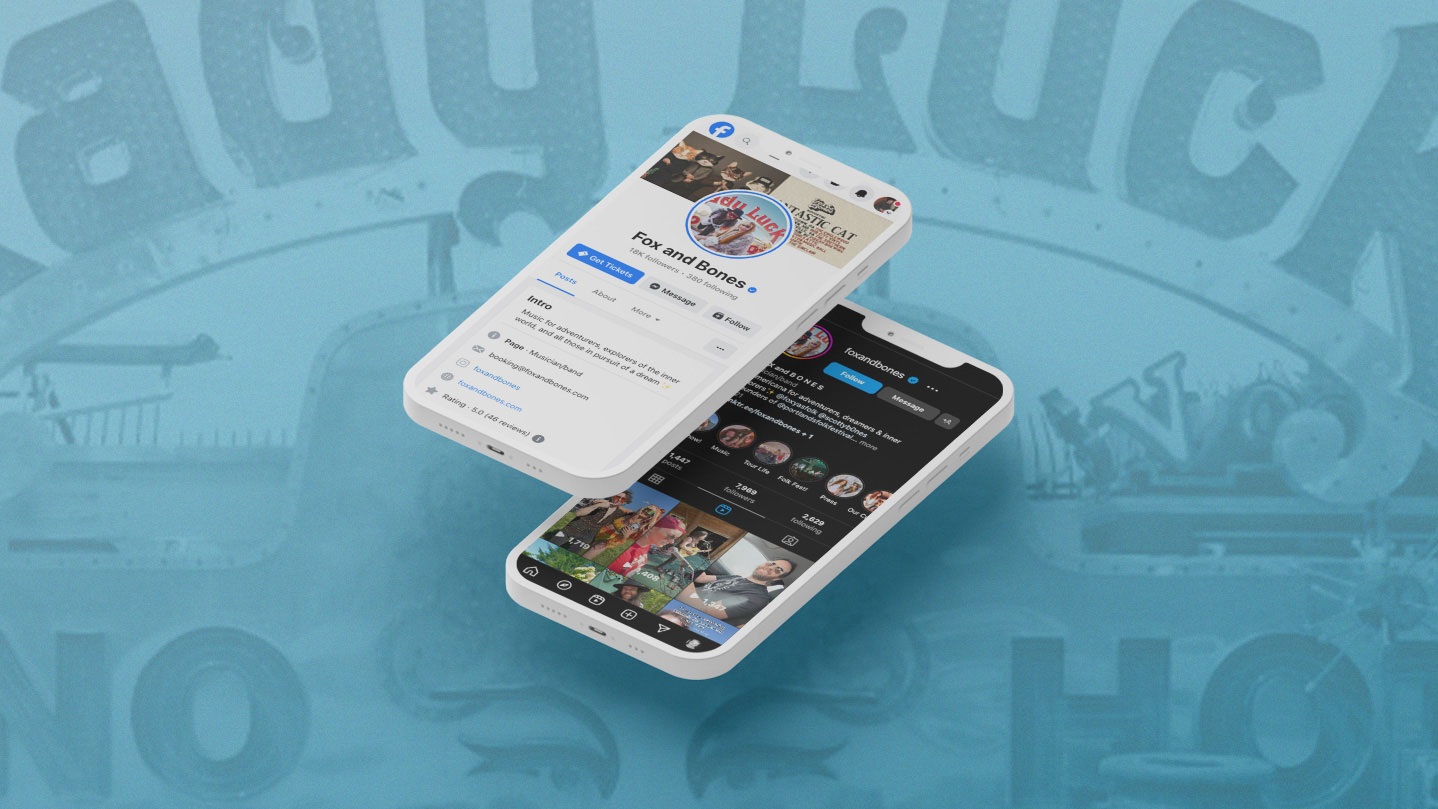
3. Share your music and content consistently
Think of social media as a conversation; use it as a tool to interact with fans and share your journey as an artist. You don’t have to be active on every platform or carry endless conversations all at once.
In order for your presence to be sustainable over the long term, choose just a few platforms where you feel most comfortable.
You’re first and foremost a musician, so if songwriting, recording, and performing are your strengths, use those skills to create content for your fans. Sharing content shouldn’t take over your schedule when you could be investing time in making music.
If you’re just getting started with social media for your music, look for the platforms where you have the best chance of finding potential new fans, and put your energy there. Otherwise, focus on the services that you enjoy using, and the ones where your fans are already actively engaging with you.
Social media can be draining — if you have lots of content to push out, try using a scheduling tool like Hootsuite or Buffer to help your marketing efforts run smoothly. Be sure that there’s variety in what you share, and stay aware of comments or questions that may need follow up after posting.
How do you know which social media services are a good fit for you to market your music? These are some options to consider:
Facebook remains a popular platform, with musicians and fans engaging through shared content ranging from text updates, photos, and videos. Be aware that your organic reach may be low — stay engaged with posted content to help with this.
As a media-driven platform, Instagram is a good fit for many musicians. From video and highlight reels to options to “go live,” try different approaches to market your music in a way that’s more genuine than curated.
YouTube
To build up your following on YouTube, try experimenting with quality videos and upload them on a consistent schedule. People search for music all the time on YouTube, so if videos are your thing, this is a good place to market your work. You can also engage fans with YouTube Shorts, which may be less produced but more personable.
TikTok
If you enjoy making quick video clips, try TikTok to help expose your music more broadly. It allows for spontaneity and authenticity, and can help you reach many more new fans in a rapid manner.
X
X (formerly Twitter) requires little effort in creating content, so if you’re interested in engaging fans through regular conversations, this may be a good way to build your brand and market your music.
To maximize the number of fans you’re making on social media, create a Smart Links page on your website that contains all of your social media links. Use that as the link in your profile on social media platforms while you’re releasing new content or marketing current music. Then you can read the Smart Links data to see where your fans are landing on that page from, and, by extension, through which services they are most interested in following you.
Building fans on social media can take time. So, with whichever social media platform(s) you plan to use to market your music online, make sure you’re ready to put in continued effort.
Also see:
Social media for musicians: find your fit and grow your fanbase
15 killer content ideas for musicians to get more fans on social media
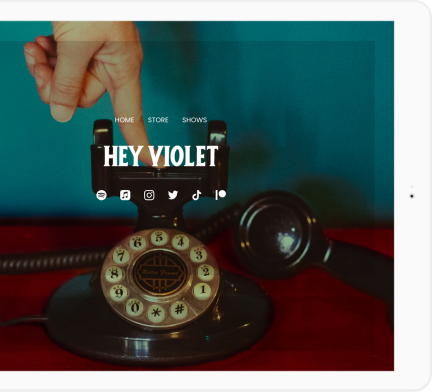
Create a custom music smart link
Connect fans to your music with one simple, shareable link. Easily build a stunning custom smart link that deepens your connection with fans.CREATE A SMART LINK
4. Experiment with social media ads
You’ve likely seen social media ads for music all over your various feeds. It’s worth experimenting on the platforms where your fans are concentrated to see if some paid outreach helps you connect with listeners that dig your music.
It helps to have a strong social media presence before dabbling in ads, and to have a feeling for the type of platform where your music might best succeed. Plus, you’ll want to have a bit of a budget to play with.
The most popular platforms for artists to market their music with paid ads are Instagram and Facebook, with differing options for time and cost investment. You’ll want to experiment and see what works well for you.
A few things to keep in mind:
- Find where your target demographic is most likely to be spending time
- Set a realistic budget, with costs that make sense per platform
- Use organic and paid content in tandem
- Consider using video, but research best practices and trends first
- Keep your ads current
- Make sure to analyze your results to be certain you are spending effectively
You don’t have to advertise on all platforms at once (although you may want to if you have something great to share, like a new album). Find what works best for you and what is sustainable, and continue paid ads with that in mind.
Also see:
How to create a music marketing budget
Social media advertising in 2024: A detailed guide to help you get started
5. Pitch your music to Spotify playlists
When it comes to music marketing, adding your songs to streaming platforms is helpful for discovery. You can use a music distribution service like DistroKid to upload your tracks through to Spotify, Apple, Amazon music, and more.
If you want to market your music on streaming services, Spotify is a good place to start. Spotify for Artists offers tools to optimize your streaming presence and improve your reach within the algorithm.
If you decide to invest your energy in this approach, getting your song featured on a Spotify playlist can be a great way to reach a whole new base of listeners.
Depending on your music marketing goals, getting your tracks featured on a playlist can be just as valuable as getting a press write-up. For human-curated Spotify playlists, attempting to get your song included is essentially the same as any other kind of pitch: often it comes down to timing more than anything.
Keep in mind that much of the music discovery on Spotify happens through personalized, algorithm-driven playlists, like Release Radar and Discover Weekly. These lists make it possible for smaller, independent artists to reach their niche audience organically. If you’re trying to get on those kinds of playlists, prepare well in advance of your release.
What it all comes down to is this: the more active you are on Spotify, the more you’ll get noticed by the algorithm and playlist curators.
Also see:
How to get your music featured on Spotify playlists
5 tips to build your Spotify streams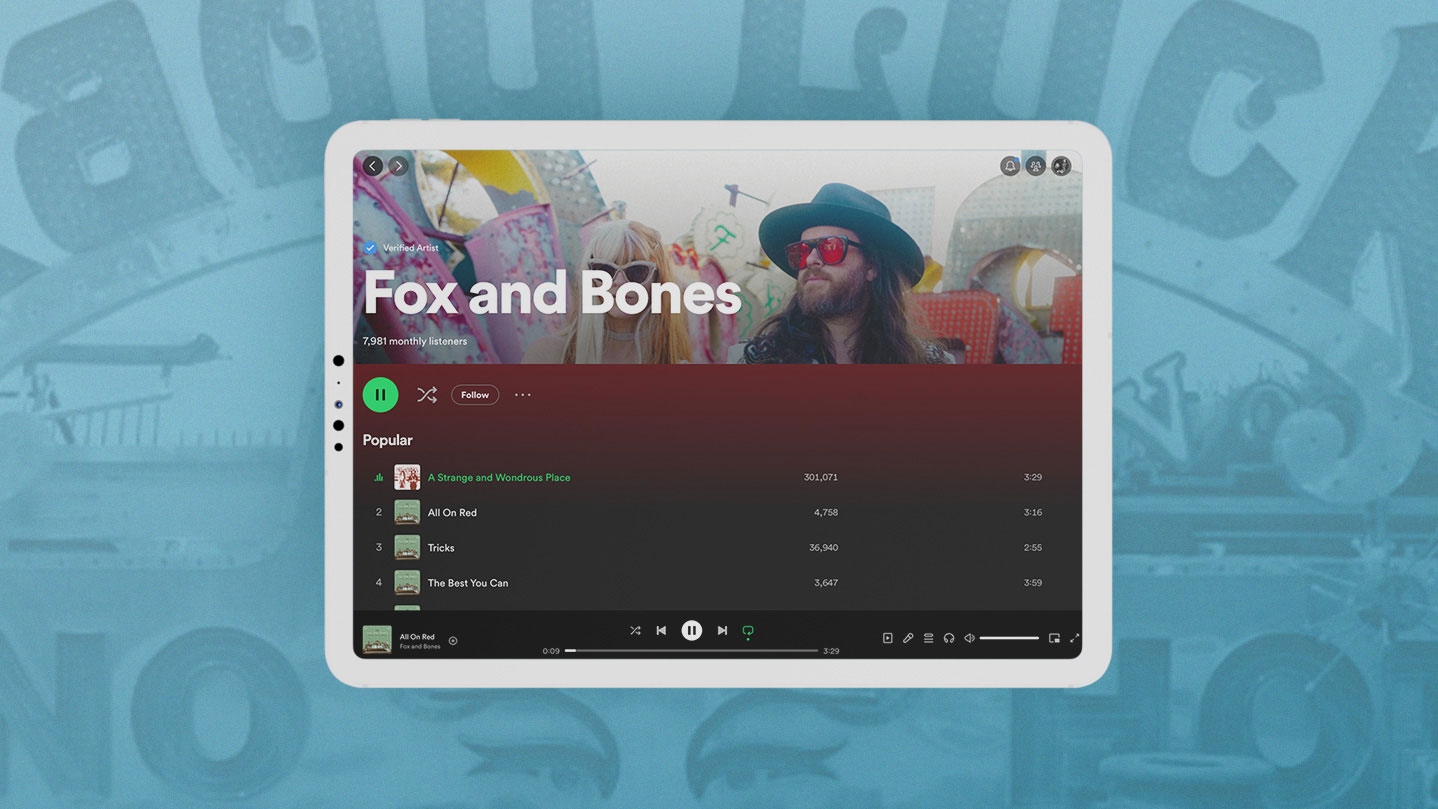
6. Pitch to music reviewers and blogs
The most important thing to understand when pitching to music blogs and publications is that it’s not just about having great music. You also need to have a compelling story that their audience will care about.
If you are getting started with marketing your music and want to try pitching, it’s a good idea to figure out your story and build on it. This article will point you in the right direction: How to get publicity to promote your music. Then, once you’ve got some ideas on how to generate buzz, you’ll be ready to reach out to blogs and music publications.
Make sure you’ve got up-to-date assets ready, such as your promotional photos, new or best tracks, and a professional EPK for your music. Then work on reaching out and following up with music blogs that are a good fit. Whether local or large scale, mentions of your music online are a great way to gain some traction for new releases and boost search engine hits.
Plus, you can re-purpose coverage in your other marketing efforts: sharing on social media, featuring reviews in your blog, and adding press quotes to your website and advertisements moving forward.
Also see:
How to pitch your music to online reviewers
How to effectively use press coverage as a musician
7. Build and use your email list
It’s hard to know for sure which social media platforms your current and potential fans may be using. But most people have an email address they check daily, making email the most reliable way to keep in touch over the long term.
Making a point to build your mailing list will pay off when you get down to marketing your music. Why is that? It’s the ultimate permission marketing. Fans sign up because they want to hear from you. Once they’re on your list, email offers the highest return for fans buying your music, merch, tickets to shows, and supporting your projects.
Marketing your music with your email list is a two-fold strategy: first, you’ll need to get fans on your list; second, you’ll want to continue engaging those fans to keep your music top of mind.
If you’ve decided to build up your mailing list prior to releasing new music, one of the best ways to reach that goal is to create a Landing page. This page can contain just a Mailing List Signup Form feature. You can drive traffic to this page from social media platforms, and offer an incentive like a free song download or access to exclusive content to sweeten the deal.
Another way to build up your email list is by making it your primary call-to-action on your website. Put the signup box in an obvious location, and specifically direct people’s attention to it. You can also set up a sign-up list at your shows, and collect email addresses at your merch table or by the stage.
With each email newsletter you send, it’s best to focus on just one objective that you’re trying to achieve, for the greatest chance of success. Regularly analyze data like the open rate and the click rate for each email, and experiment with tweaks to your new campaigns (for instance, a more intriguing subject line or a new email format) to keep your fans engaged.
There’s no hard and fast rule to how often you should send out newsletters, as long as you’re consistent. If you’re new to email marketing, try sending out a monthly newsletter to test the waters while you figure out what works for your fanbase and what doesn’t. Then follow these up with special announcements when you have upcoming release dates, shows, new merch for sale, or other content that you want to share.
Also see:
10 essential online music marketing tools
How to create an email opt-in landing page
———————————————-
In the industry nowadays, musicians often wear many hats and marketing music independently can seem like a full-time job outside of making music. If you’re feeling overwhelmed, just remember that every kind of music marketing always comes back to the three pillars of fan engagement: consistency, authenticity, and sustainability.
Choose a few methods of marketing your music when you are ready to release something. Make notes on what’s working and do more of that, then layer in additional marketing strategies as you go along.
